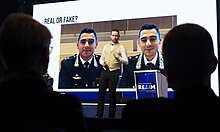Video manipulation is a digital process that involves altering or modifying video images to produce a desired effect. Its roots can be traced back to the 1950s when it required manual tape cutting and splicing. Over time, it has evolved with technology[2] advancements, such as the video cassette recorder, digital editing systems, and leading editing software like Adobe Premiere[4] and Apple’s Final Cut Pro. In recent years, it has seen a significant leap with the introduction of deepfake[3] technology, which uses artificial intelligence[1] to create hyper-realistic fake videos. The technology can be used creatively, but it also poses serious threats in the realms of politics and news, making it a subject of regulation and policy debates globally. The key challenge lies in balancing the freedom of information with the potential harm from the spread of fake and misleading content.
Video manipulation is a type of media manipulation that targets digital video using video processing and video editing techniques. The applications of these methods range from educational videos to videos aimed at (mass) manipulation and propaganda, a straightforward extension of the long-standing possibilities of photo manipulation. This form of computer-generated misinformation has contributed to fake news, and there have been instances when this technology was used during political campaigns. Other uses are less sinister; entertainment purposes and harmless pranks provide users with movie-quality artistic possibilities.
